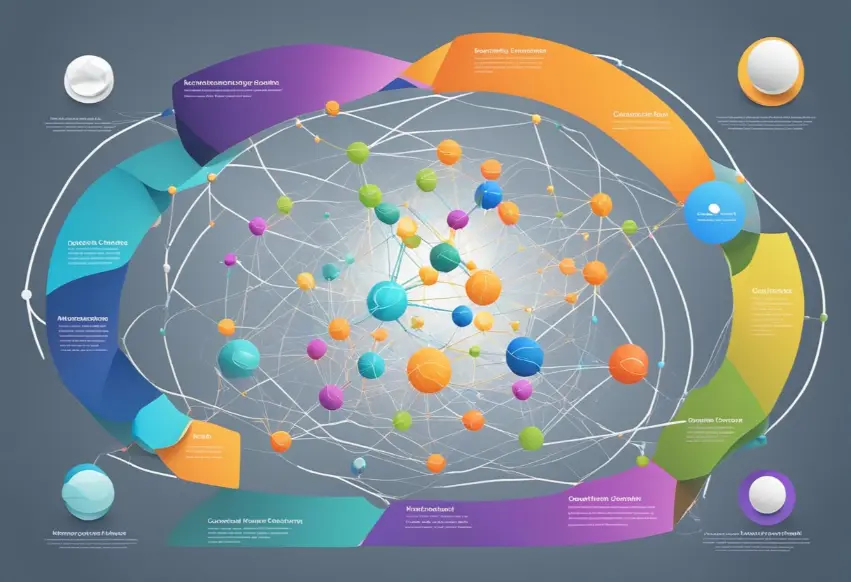Are you struggling to get your content in front of the right audience? A solid content distribution strategy can make all the difference. With so much content available online, simply creating great content isn’t enough. You need to have a plan in place to ensure that your content reaches the right people at the right time.

Content distribution is the process of getting your content in front of your target audience. It involves identifying the channels where your audience is most active and creating a plan to distribute your content effectively. A good content distribution strategy can help you increase brand awareness, generate leads, and drive traffic to your website. In this article, we’ll explore some of the key elements of a successful content distribution strategy and provide some tips for getting started.
Understanding Content Distribution

Defining Content Distribution Strategy
Content distribution is the process of sharing and promoting your content to your target audience through various channels. This strategy involves identifying the most effective platforms to distribute your content, such as social media, email, blogs, and other online communities.
A content distribution strategy is a plan that outlines how you will distribute your content to your target audience. This plan should include the types of content you will create, the channels you will use to distribute it, and the specific goals you want to achieve through your content.
Importance of Content Distribution
Creating great content is only half the battle. Without a solid content distribution strategy, your content may not reach your target audience. A well-executed content distribution strategy can help you increase your reach, engage your audience, and drive more traffic to your website.
By distributing your content through various channels, you can increase your chances of reaching your target audience and building brand awareness. Additionally, a content distribution strategy can help you establish yourself as an authority in your industry and build trust with your audience.
Overall, understanding content distribution is crucial for any business that wants to succeed in the digital age. By developing a solid content distribution strategy, you can increase your chances of reaching your target audience and achieving your marketing goals.
Content Distribution Channels

When it comes to distributing your content, there are three main channels to consider: owned media outlets, earned media outlets, and paid media outlets.
Owned Media Outlets
Owned media outlets are channels that you have complete control over, such as your website, blog, social media accounts, and email list. These channels are great for distributing your content to your existing audience, as well as attracting new followers.
To make the most of your owned media outlets, it’s important to have a clear content calendar and posting schedule. This will help you stay consistent and keep your followers engaged.
Earned Media Outlets
Earned media outlets are channels that you don’t have direct control over, but can still use to distribute your content. Examples include guest posting on other websites, being featured in industry publications, and getting mentioned on social media.
To make the most of earned media outlets, it’s important to build relationships with influencers, journalists, and other industry leaders. This can help you get your content in front of a wider audience and increase your credibility.
Paid Media Outlets
Paid media outlets are channels that require you to pay for distribution, such as social media ads, Google AdWords, and sponsored content. While these channels can be expensive, they can also be very effective at reaching a targeted audience.
To make the most of paid media outlets, it’s important to have a clear understanding of your target audience and their interests. This will help you create ads and content that are relevant and engaging, and increase your chances of success.
Overall, a successful content distribution strategy should include a mix of owned, earned, and paid media outlets. By using a variety of channels, you can reach a wider audience and increase your chances of success.
Developing a Content Distribution
Plan

To ensure the success of your content marketing efforts, it is crucial to have a well-defined content distribution plan. Here are the key steps to developing a content distribution plan that will help you reach your target audience and achieve your objectives.
Identifying Target Audience
The first step in developing a content distribution plan is to identify your target audience. You need to know who your audience is, what their needs and interests are, and where they spend their time online. This will help you create content that resonates with your audience and distribute it through the channels they are most likely to use.
To identify your target audience, you can use tools such as Google Analytics, social media analytics, and customer surveys. You can also create buyer personas to represent your ideal customers and use them as a reference when creating content.
Setting Clear Objectives
Once you have identified your target audience, the next step is to set clear objectives for your content distribution plan. Your objectives should be specific, measurable, achievable, relevant, and time-bound (SMART).
Your objectives could include increasing website traffic, generating leads, increasing brand awareness, or improving customer engagement. Whatever your objectives are, make sure they align with your overall business goals and are realistic.
Content Mapping and Planning
The final step in developing a content distribution plan is to map out your content and plan how you will distribute it. Content mapping involves creating a plan for each stage of the buyer’s journey and identifying the types of content that are most effective at each stage.
Once you have mapped out your content, you need to plan how you will distribute it. This could include using social media, email marketing, influencer marketing, or paid advertising. You should also consider using a mix of organic and paid distribution channels to reach a wider audience.
By following these steps, you can develop a content distribution plan that will help you reach your target audience, achieve your objectives, and drive business results.
Execution of Distribution Strategy
Once you have created your content and identified your target audience, it’s time to execute your distribution strategy. This involves getting your content in front of your audience through various channels. Here are some key elements of executing a successful distribution strategy:
Content Scheduling
To ensure that your content is distributed consistently and effectively, it’s important to create a content schedule. This will help you plan out when and where your content will be published, as well as ensure that you have a steady stream of content going out to your audience. Use a spreadsheet or calendar tool to map out your content schedule, and be sure to include important dates and events that may be relevant to your audience.
Cross-Promotion Techniques
Cross-promotion is a powerful way to expand the reach of your content. This involves promoting your content on other platforms and channels, such as social media, email newsletters, and other websites. By leveraging the audiences of other platforms, you can reach new audiences and drive more traffic to your content. Be sure to tailor your cross-promotion efforts to each platform and audience, and always include a clear call-to-action to encourage engagement.
Performance Tracking
To ensure that your distribution strategy is effective, it’s important to track your content’s performance. This involves monitoring metrics such as views, engagement, and conversions to determine what’s working and what’s not. Use analytics tools to track your content’s performance across different channels, and use this data to optimize your distribution strategy over time. By constantly monitoring and refining your approach, you can ensure that your content is reaching its full potential.
In summary, executing a successful distribution strategy involves creating a content schedule, leveraging cross-promotion techniques, and tracking your content’s performance. By focusing on these key elements, you can ensure that your content is reaching your target audience and driving engagement and conversions.
The greatest storytelling techniques in our digital age are as follows: UX Strategy, Branding, & Content Marketing. These are the tools of our trade at Paperballad & Co. Together, let’s dance our last dance and captivate the world with your story.
Analysing and Optimising Content
Performance
To ensure the success of your content distribution strategy, it is essential to analyse and optimise the performance of your content regularly. This will help you identify what works and what doesn’t, and make data-driven decisions to improve your strategy. Here are some key steps to follow when analysing and optimising your content performance:
Key Performance Indicators (KPIs)
To measure the success of your content distribution strategy, you need to define and track your key performance indicators (KPIs). These are metrics that help you understand how well your content is performing and whether it is meeting your goals. Some common KPIs for content distribution include:
- Traffic: the number of visitors to your website or landing page
- Engagement: the level of interaction with your content, such as likes, shares, comments, and time spent on page
- Conversions: the number of people who take a desired action, such as filling out a form, making a purchase, or subscribing to a newsletter
By tracking these KPIs, you can identify which pieces of content are performing well and which ones need improvement.
Data-Driven Optimisation
Once you have identified your KPIs, you can use data-driven optimisation to improve your content performance. This involves analysing your data to identify trends and patterns and making changes based on those insights. For example, if you notice that your blog posts with images get more engagement than those without, you can start adding more images to your posts.
To make data-driven optimisation easier, you can use tools such as Google Analytics or HubSpot to track your KPIs and generate reports. These tools can help you identify which channels are driving the most traffic and conversions, which pieces of content are performing best, and which audience segments are most engaged.
A/B Testing for Content
Another way to optimise your content performance is to use A/B testing. This involves creating two versions of a piece of content and testing them against each other to see which one performs better. For example, you could create two versions of a landing page with different headlines, images, or calls to action, and see which one generates more conversions.
A/B testing can help you identify which elements of your content are most effective and make data-driven decisions to improve your strategy. However, it is important to test one variable at a time and make sure you have statistically significant results before making any changes.
By following these steps and regularly analysing and optimising your content performance, you can improve the effectiveness of your content distribution strategy and achieve your goals.
Conclusion
In conclusion, mastering a robust content distribution strategy is essential for amplifying your reach and engagement in today’s competitive digital landscape. While creating high-quality content is paramount, effectively distributing it to the right audience at the right time is equally crucial.
By continually analysing and optimising content performance, businesses can refine their distribution strategies, maximise their impact, and drive tangible results. Whether it’s increasing website traffic, generating leads, or enhancing brand awareness, a well-executed content distribution strategy can pave the way for sustained success in the ever-evolving digital landscape.
In essence, by embracing the principles outlined in this guide and adapting them to suit your specific business objectives and audience preferences, you can unlock the full potential of your content and propel your brand towards greater visibility, engagement, and growth.
Words can change the world. At Paperballad & Co., we wield the mighty pen to help you achieve product-market fit through science-driven content. Schedule a consultation with us here and change the world with our words.















